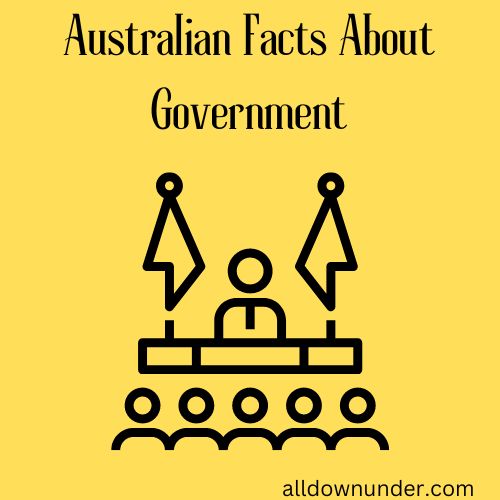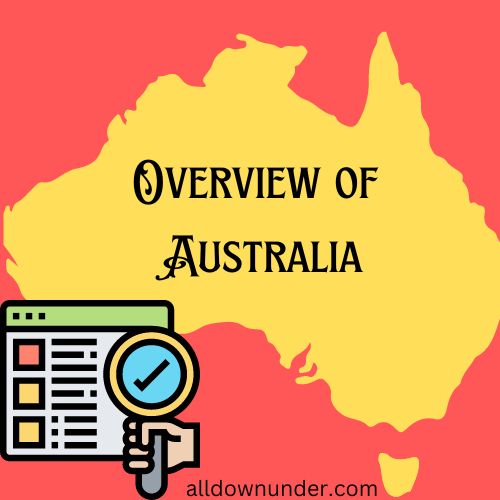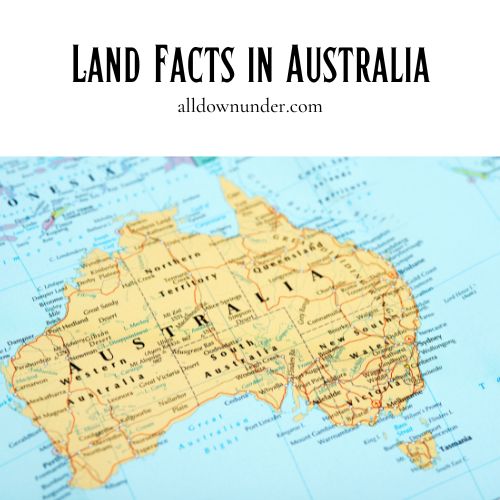Overview of Australia
General Geography People Government Economy Communications Transportation Military
Australian Government
The Australian Constitution makes Australia a constitutional monarchy, with Queen Elizabeth II as Queen of Australia and the Governor-General as her representative. Australian government is based upon the British parliamentary system which gives the people three levels of government – the Federal, State and Local Governments.
See also on our website – Australian Governor-General Australian Prime Ministers Australian Constitution
| Government type | federal parliamentary democracy |
| Independence | 1 January 1901 (federation of UK colonies) |
| Constitution | 9 July 1900, effective 1 January 1901 |
| Administrative divisions | 6 states and 2 territories New South Wales, Queensland, South Australia, Tasmania, Victoria, Western Australia, Australian Capital Territory, Northern Territory |
| Dependent areas | Ashmore and Cartier Islands, Christmas Island, Cocos (Keeling) Islands, Coral Sea Islands, Heard Island and McDonald Islands, Norfolk Island, Macquarie Island |
| Legal system | based on English common law; accepts compulsory ICJ jurisdiction, with reservations |
| Suffrage | 18 years of age; universal and compulsory |
| Executive branch | chief of state Queen of Australia Elizabeth II (since 6 Feb 1952); represented in Australia by Governor General. head of government: Prime Minister Kevin Michael RUDD (since 27 June 2013); Deputy Prime Minister Anthony ALBANESE (since 27 June 2013) cabinet prime minister nominates, from among members of Parliament, candidates who are subsequently sworn in by the governor general to serve as government ministers elections none; the monarch is hereditary; governor general appointed by the monarch on the recommendation of the prime minister; following legislative elections, the leader of the majority party or leader of a majority coalition is sworn in as prime minister by the governor general |
| Legislative branch | bicameral Federal Parliament consists of – Senate 76 seats – 12 from each of the 6 states and 2 from each of the two mainland territories; one-half of state members are elected every 3 years by popular vote to serve 6 year terms while all territory members are elected every 3 years House of Representatives 150 seats; members elected by popular preferential voting to serve terms of up to 3 years; no state can have fewer than 5 representatives |
| Judicial branch | High Court (chief justice & 6 other justices are appointed by the governor general) |
| Political parties | Australian Democrats, Australian Greens, Australian Labor Party, Country Liberal Party, Family First Party, Liberal Party, The Nationals |
Updated August 2011. You may notice that we show information from a variety of dates. We are unable to find the same type of information for more recent dates than what we show here. The information provided above is for entertainment purposes only. For more information, please visit any of the Australian government websites and the CIA World Fact Book



